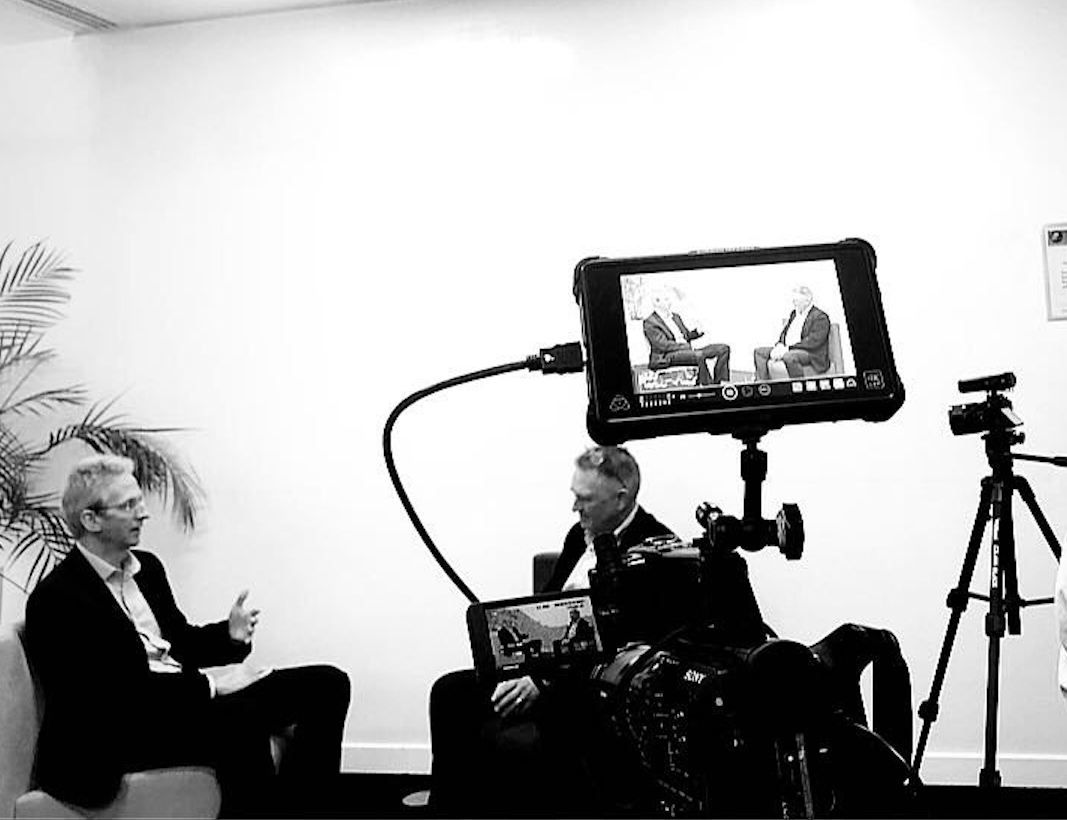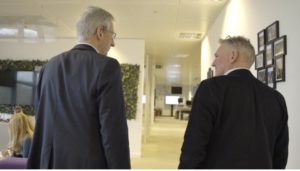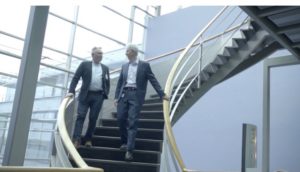
Is the Future of Talent Recruitment about Leadership?
In my search across the globe for the leading views on the Future of Talent Recruitment I recently visited the EMEAR (Europe, Middle East, Africa & Russia) HQ of Cisco Systems at Bedfont Lakes, just outside London, where I interviewed Colin Seward their EMEAR CIO.
Colin is a highly respected thought leader in the technology world whose recent talk at the Gartner Symposium 2018 was widely acclaimed and generated much discussion and debate amongst the audience of CIOs present. So, I was keen to ask him how he saw the Future of Work and the Future of Talent and Talent Recruitment developing within Cisco IT but also generally across the technology sector and was fascinated by his answers.
Future of Work and Talent Recruitment
When I asked Colin for his opinion on the Future of Work and Talent, I was delighted to hear how positive he is about the future. He talked about recent research that Cisco has undertaken in the US around the creation and displacement of workers. The research indicated that it would not lead to a reduction in employment but a significant shift in the work people undertake and the skills they will need to possess.
As an example, Colin proudly outlined how his team are applying Artificial Intelligence within Cisco IT to increase the productivity of engineers by removing repetitive and boring work, especially in system admin tasks where there are huge time pressures, thus enabling them to move on to more interesting and challenging tasks. While in network security Colin explained how AI and automation are being used extensively to enable Cisco’s Cyber Security team to respond rapidly to the 1.2 trillion security events the global Cisco network receives daily.
It is clear from talking to Colin that he is passionate about how AI and machine learning can both improve the speed and quality of the service his team deliver internally whilst at the same time enriching the job content and challenges his engineers face. This is the type progressive thinking and application of technology which we believe marks Colin as a leader in his field.
Bridging the Technology Skills-Gaps
Colin sees no immediate solution to the hard- and soft-skills gaps that are a feature of technology talent recruitment and retention today. “Soft skills like creative thinking and problem solving are crucial skills that will always be relevant in the future” whereas, Colin believes “technical skills will come and go and need refreshing as new technologies emerge – however the professional skills such as ‘understanding software lifecycle or data visualization will continue to underpin these”.
Only recently a LinkedIn survey indicated that soft-skills matter as much or more than hard skills. What sets Colin out as a leader is he has accepted the argument that the combination of soft skills with technical skills are needed and moved beyond the debate into understanding and planning for the consequences of operating in a world where soft-skills matter.
Continuous Learning
For Colin part of the solution to this problem for his team is continuous learning.
“The challenge with this is that when you are in a project it is all too easy to de-prioritise learning” was Colin’s thinking. He went on to explain:
“if you continue to deprioritise learning there will eventually come a time when your teams’ overall skills-set are behind and once you are behind it becomes a problem which may force your team members ultimately to take six months away from business critical projects to upskill and retrain”.
Colin highlighted how the Cisco IT Workforce Strategy, which exists on three levels — individual, team and organisation — has been established to facilitate continuous learning.
At the individual level the team members are empowered through the “Three-Es” framework: education, exposure and experience. Within Cisco IT individuals own their personal development by initially establishing their existing skill-sets and then plotting how they can then leverage the “Three-Es” to develop their skills and continually improve themselves, thus enabling greater job mobility into their future chosen career.
Within each IT team, managers identify their teams’ collective skills, strengths, areas for development and how the managers create the environment of continuous personal development and learning that supports the team’s internal mobility.
Finally, the workforce strategy planning takes place at the organisation level where the IT senior leadership team (SLT) review skills for the whole of IT. The SLT look at the trends for the future and start the planning of how the IT team will develop those skills. They also consider which parts of the IT organisation will need to start investing in developing those future skills now. Within the workforce planning they look at the demand for skills, trends in the marketplace, what they have inside Cisco IT and how do they start to close some of those skills gaps.
They ask some fundamental resource planning questions: do they need to recruit new people and if so what sort of people? For example, university graduates, or people that are “silver bullets” that close a particular subject matter expertise gap. They also consider retraining people within the team or using contractors or vendor companies who have a particular niche skill.
For me this once again sets Colin out as a progressive and proactive thinker. He has “future-paced” himself and his team into the new world of work and is initiating solutions that will ensure their continued success.
Buddy-System
Colin shared with me a specific tactic they use to bridge internal skills gaps called the “buddy-system”. This is where new graduate entrants to Cisco, with for example programming skills, “buddy-up” with experienced engineers whose key skills relate to managing networks. This Cisco “buddy-system” facilitates cross-learning and shared experiences which not only increases the IT function’s collective skill-sets, it facilitates a whole host of other benefits like team working, shared values and a collection of informal collaborative networks all of which high performing businesses possess in abundance.
Application of the SFIA Framework
A common challenge across different geo-political regions is how multi-nationals harmonise the different IT functions, job roles and skill-sets to create a common internal framework, especially when technology is automating elements of the roles differently within the varied parts of the regions.
Colin shared with me how Cisco IT is starting to use the Skills Framework for the Information Age (SFIA) Framework to overcome this challenge. He talked enthusiastically about how they have rebuilt all the job profiles within Cisco IT using the Burning Glass Tool to suck the job postings for different job roles across the Internet before then breaking out the skills for the job roles within Cisco IT.
They then use another tool, Lexonis, which allows them to send the various job roles out to the managers within Cisco IT to ensure the skill-sets for the new job roles were a match.
The SFIA framework supports this by facilitating a shared vocabulary and framework across the IT organisation to enable consistency across all of IT and to future proof it. Whilst they are still testing out the framework, if successful the whole solution will enable engineers and IT professionals within Cisco IT to be highly mobile across the whole business, which creates greater career opportunities and challenges for his team.
Conclusion
These are all proactive strategies that will enable Cisco IT to attract, recruit, retain and retrain the best professionals in the industry. I find it refreshing to see a leader being so passionate and progressive in his team’s resource planning and career development. So often in recruitment we see “reactive” businesses and managers that take a knee-jerk reaction to talent attraction and retention.
What is clear is that Colin and his SLT have set out to first acquire and retain the best talent; and having done so have fully grasped that the Future of Work and Future of Talent Recruitment is not one where reactive strategies will enable them to thrive.
In the future, more than ever, the only thing that will set a business like Cisco above its competition is ultimately its people. Investing in and further developing people is going to be a key differentiator in the War for Talent.
When so many business are plotting a course using AI and Machine Learning that sees a reduction in employee numbers and a supposed increase in productivity and profitability it is refreshing to see that through Colin’s leadership, Cisco’s IT organisation is charting a course that will see them extend their leadership in the world of Technology and business through a strategy that attracts, recruits, retains and retrains the best professionals in the industry.


